- Home
- Garden Wildlife
- Mammals
- Carnivores
Foraging badgers, badger footprints and a sett entrance
In Britain, badgers live in larger groups than those in continental Europe and display a greater range of social behaviour, centred on the setts in the group’s home range. In urban areas, the boundaries of home ranges are less well defined and overlap more with those of other groups.
Badgers emerge around dusk to forage and to groom themselves and other members of the group. Smell is the most important means of communication, identifying individuals and marking out group ranges.
Numerous small holes dug in lawns can be indication of badgers foraging for earthworms and insect larvae, and root vegetables are sometimes unearthed. More rarely, excavations by badgers can undermine buildings, but badgers are not a threat to either people or pets and, unless injured or trapped, will almost always move away if confronted.
It is possible to build a fence that will stop badgers getting into your garden, but they can easily break through or dig under a poorly constructed fence, and if it prevents a badger from moving to or from its sett, it may be an offence under the law. It is better to position gaps or gates in fencing that minimise any damage (badger gates are heavy enough to prevent small dogs pushing through but allow badgers access). Badgers stick to a network of paths leading to foraging areas and between sett entrances, and when these established routes meet a man-made obstacle, such as a road or a stone wall, badgers will often just keep going.
Badgers in Your Garden produced by the Badger Trust is a good source of general information
Appearance and activity Badgers are instantly recognisable: two dark stripes run the length of their white snout, perhaps acting as a signal to warn off predators. They are large animals bu garden standards, 65-80cm long and up to 18kg weight. Males are bigger than females. They are stocky with short, powerful legs and large claws on their forefeet. They are much less active during winter but do not properly hibernate and will forage outside the sett in mild weather. They are mostly crepuscular and nocturnal. A study of suburban badgers in Bristol2 found that they emerged later and foraged over a smaller area on nights with moonlight and clear skies.
Diet In urban areas, badgers make use of gardens, golf courses and embankments. They rely less on earthworms and more on a greater variety of foods than do rural badgers. Scavenged food, from rubbish bins, compost heaps, bird tables and that put out by people, made up a quarter of the diet over a year in one study; invertebrates (such as earthworms and cockchafer larvae), fruits, flower bulbs and vegetables also make up significant portions of the diet at different times of the year. Occasionally, small animals, such as hedgehogs and rodents, are also eaten.
Status, population size and distribution Native, common and widespread. Badgers and their setts are fully protected in the UK under The Protection of Badgers Act 1992. UK population about 300,000. The population has increased over the last ten years. Badgers are widely distributed throughout Britain and Ireland but are scarcer in Scotland. They are absent from most offshore islands except Anglesey, Arran, Canvey, Wight, Sheppey and Skye.
Red Fox Vulpes vulpes
Foxes exploit the built environment with panache. They are intelligent, adaptable mammals, opportunistic, with unfussy palates, and have readily adapted to towns and cities, where they are more accustomed to people. In fact, more is known about urban foxes than about their rural counterparts.
Foraging badgers, badger footprints and a sett entrance
In Britain, badgers live in larger groups than those in continental Europe and display a greater range of social behaviour, centred on the setts in the group’s home range. In urban areas, the boundaries of home ranges are less well defined and overlap more with those of other groups.
Badgers emerge around dusk to forage and to groom themselves and other members of the group. Smell is the most important means of communication, identifying individuals and marking out group ranges.
Numerous small holes dug in lawns can be indication of badgers foraging for earthworms and insect larvae, and root vegetables are sometimes unearthed. More rarely, excavations by badgers can undermine buildings, but badgers are not a threat to either people or pets and, unless injured or trapped, will almost always move away if confronted.
It is possible to build a fence that will stop badgers getting into your garden, but they can easily break through or dig under a poorly constructed fence, and if it prevents a badger from moving to or from its sett, it may be an offence under the law. It is better to position gaps or gates in fencing that minimise any damage (badger gates are heavy enough to prevent small dogs pushing through but allow badgers access). Badgers stick to a network of paths leading to foraging areas and between sett entrances, and when these established routes meet a man-made obstacle, such as a road or a stone wall, badgers will often just keep going.
Badgers in Your Garden produced by the Badger Trust is a good source of general information
Appearance and activity Badgers are instantly recognisable: two dark stripes run the length of their white snout, perhaps acting as a signal to warn off predators. They are large animals bu garden standards, 65-80cm long and up to 18kg weight. Males are bigger than females. They are stocky with short, powerful legs and large claws on their forefeet. They are much less active during winter but do not properly hibernate and will forage outside the sett in mild weather. They are mostly crepuscular and nocturnal. A study of suburban badgers in Bristol2 found that they emerged later and foraged over a smaller area on nights with moonlight and clear skies.
Diet In urban areas, badgers make use of gardens, golf courses and embankments. They rely less on earthworms and more on a greater variety of foods than do rural badgers. Scavenged food, from rubbish bins, compost heaps, bird tables and that put out by people, made up a quarter of the diet over a year in one study; invertebrates (such as earthworms and cockchafer larvae), fruits, flower bulbs and vegetables also make up significant portions of the diet at different times of the year. Occasionally, small animals, such as hedgehogs and rodents, are also eaten.
Status, population size and distribution Native, common and widespread. Badgers and their setts are fully protected in the UK under The Protection of Badgers Act 1992. UK population about 300,000. The population has increased over the last ten years. Badgers are widely distributed throughout Britain and Ireland but are scarcer in Scotland. They are absent from most offshore islands except Anglesey, Arran, Canvey, Wight, Sheppey and Skye.
Red Fox Vulpes vulpes
Foxes exploit the built environment with panache. They are intelligent, adaptable mammals, opportunistic, with unfussy palates, and have readily adapted to towns and cities, where they are more accustomed to people. In fact, more is known about urban foxes than about their rural counterparts.
Carnivores
Within the group Carnivora, we have wild garden inhabitants in the Canidae or dog family and the Mustelidae, badgers, stoats and the like.
The most abundant garden carnivore however is the domestic cat (Felis catus). There are an estimated nine million cats in Britain, about a tenth of which are feral, and there can be more than 200 in a square urban kilometre. Wood mice, rabbits, voles and shrews make up a large part of their prey1.
Other garden carnivores, including stoat, weasel and, in Scotland, pine marten, are recorded less frequently.
Badger Meles meles
Badgers can become urban residents as new building developments grow up around established groups. Extensive burrows (or setts) can be shared by up to two dozen adults, together with cubs, and can extend over hundreds of square metres, with several entrances. The spoil heaps outside them, in contrast to those at fox earths, contain grass and other plant material, used as bedding.
Carnivores
Written by David Wembridge Peoples Trust for Endangered Species Reviewed by Steve Head
Within the group Carnivora, we have wild garden inhabitants in the Canidae or dog family and the Mustelidae, badgers, stoats and the like.
The most abundant garden carnivore however is the domestic cat Felis catus. There are an estimated nine million cats in Britain, about a tenth of which are feral, and there can be more than 200 in a square urban kilometre. Wood mice, rabbits, voles and shrews make up a large part of their prey1.
Other garden carnivores, including stoat, weasel and, in Scotland, pine marten, are recorded less frequently.
Badger Meles meles
Badgers can become urban residents as new building developments grow up around established groups. Extensive burrows (or setts) can be shared by up to two dozen adults, together with cubs, and can extend over hundreds of square metres, with several entrances. The spoil heaps outside them, in contrast to those at fox earths, contain grass and other plant material, used as bedding.
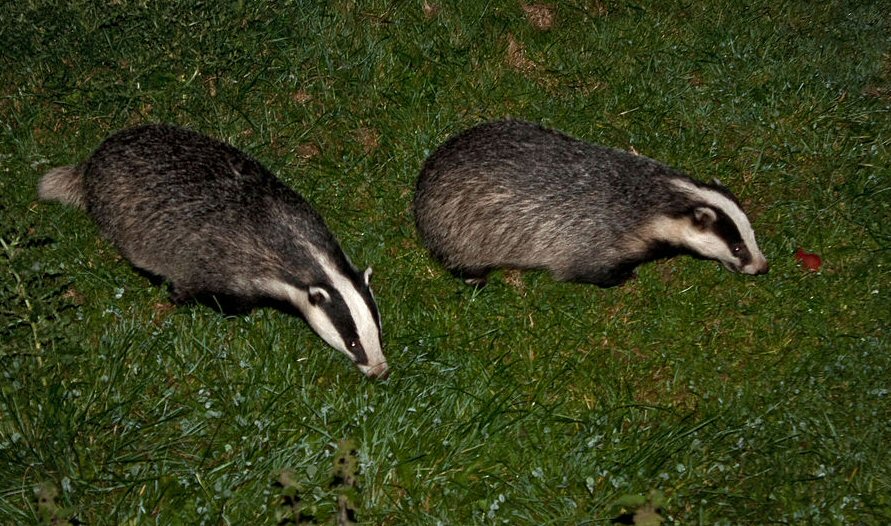

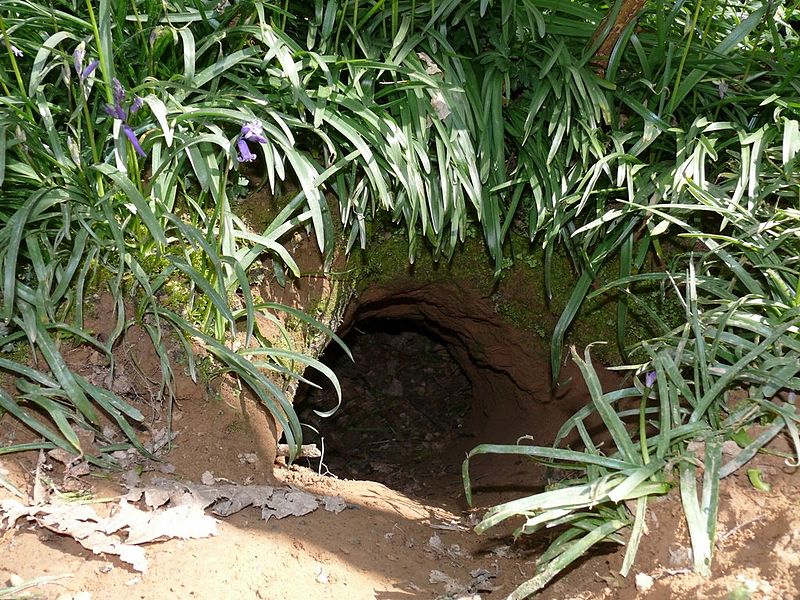
Inner city foxes tend to eat less caught prey than those in the suburbs, feeding more on scavenged food. The rich pickings that are available mean that urban foxes have smaller home ranges – typically about a tenth (10–100ha or 25–250 acres) of those in rural areas – and foxes have been known to commute, foraging in urban areas at night while spending the day out of town.
They are social animals, living in family groups of a breeding pair, together with cubs in the spring, and sometimes other subordinate juveniles and adults. These help with the rearing of cubs, feeding, grooming and playing with them. Each group occupies a territory and dens can be inside vacant or occupied buildings, often under floorboards, or under garden sheds. If necessary, foxes will dig extensive burrows (or ‘earths’), particularly in well-drained soils, choosing sites in overgrown gardens – in flowerbeds, rockeries or under tree roots – or cemeteries, under grave stones.
Foxes communicate with each other using a wide range of calls, facial expressions and body postures, as well as scent markings. Twelve adult and eight pup vocalisations have been identified and 28 groups of sounds described. Barks and loud contact calls of both sexes, particularly in the winter, include a blood-curdling ‘scream’.Smell and hearing are used to hunt and scavenge, probably using the latter to locate earthworms (a large part of their diet) as well as prey hidden in vegetation or snow.
Droppings (or ‘scats’) are left in conspicuous spots, such as on rockeries, around ponds and on patios, and fox urine has a distinctive musky odour.
To a minority of people, foxes are a nuisance, but for most, the sight of a wild carnivore or a litter of cubs, is a bonus. If you don’t want foxes in your garden, avoiding the use of fertilisers containing animal remains (such as fish or bonemeal), which can attract foxes or badgers) is sensible, and two safe, scent repellents, Scoot and Get Off My Garden, are available. Traditional repellents such as creosote, diesel and Renardine are hazards in themselves and should not be used.
Appearance and activity Foxes' bodies average 56-75cm in length, with up to 40cm tail as well.They weigh up to 9kg. In the summer, foxes lose the distinctive yellow-brown fur of their winter coat, appearing darker and scruffier while new, shorter fur grows through. Sometimes their bushy tail can be reduced to an almost furless vestige. The backs of their ears and front of their fore- and hindfeet are jet black. Foxes are active throughout the year and at any time during the day or night, but particularly so at dusk and dawn. During the day, they are sometimes seen sunning themselves on roofs.
Diet Foxes eat almost anything, rabbits, voles, earthworms and insects, and vegetable and fruirts in gardens. They are notorious scavengers from waste bins.
Status, population size and distribution Native, common and widespread. Hunting with dogs is illegal in England and Wales under the Hunting Act 2004 and is also illegal in Scotland. The GB population is about 225,000 (rural); 33,000 (urban); there are about 5000 adult foxes within the circle of the M25.
Nationally, there has been little change in the population over the last 10 years. Foxes are widely distributed in Britain and Ireland but are absent from all the Scottish islands, except Skye and Harris, and from the Scilly and Channel isles.
Stoats and weasels
Stoats and weasels are only rarely found in urban areas, but might be spotted at sites near to a rabbit warren or around grain or timber stores that support thriving populations of small mammals. Stoats and weasels are well adapted to pursuing prey into burrows: they have a sleek, sinuous shape and are exceptionally inquisitive. They are fierce predators and will kill and carry prey much larger than themselves, but are graceful and extraordinary animals to watch.
Stoat Weasel
Stoat Mustela erminea
Appearance and activity Stoats average 16-31 cm and up to 445gm weight. Stoats are often a more sandy brown colour than weasels but can be a similar chestnut brown. They have a yellowish-white underside and a black-tipped tail (while weasels’ tails are uniformly coloured). In Scotland, Wales and the west of Britain, stoats turn snow-white in winter and only the tip of the tail remains black. In winter they are largely nocturnal, while in summer they are mostly active during the day.
Diet Stoats predate rabbits and small rodents and shrews, and occasionally catch birds and fish and rob nests for eggs. They will eat insects and berries.
Status, population size and distribution Native, common and widespread. GB population 462,000. The population has continually increased over the last 25 years. Stoats are widely distributed throughout Britain and Ireland, though only rarely in urban areas.
Weasel Mustela nivalis
Weasels are Britain’s smallest carnivores, from 17-25 cm in length weighingup to about 100g. They hunt along hedgerows or stone walls, investigating each hollow and burrow. They often stand up on their hind legs, surveying their surroundings for smells and any movement. Their small size means that weasels must eat a third of their body weight each day and when prey is scarce, their numbers fall.
Appearance and activity Weasels are smaller than stoats and have a whiter belly (the line between the dark and lighter fur is irregular rather than straight as it is in stoats). Their tails are proportionately shorter than those of stoats and lack the black bushy tip. They are mostly diurnal.
Diet Mainly mice and voles, and small birds and eggs in spring
Status, population size and distribution Native, common and widespread. GB population 450,000. The population has continually increased over the last 25 years. Weasels are widely distributed across Britain but absent from Ireland and some offshore islands, including the Isle of Man and the Channel Islands.
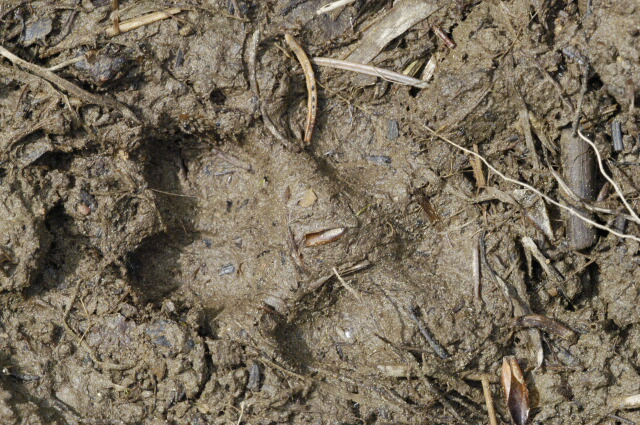
Fox footprint.
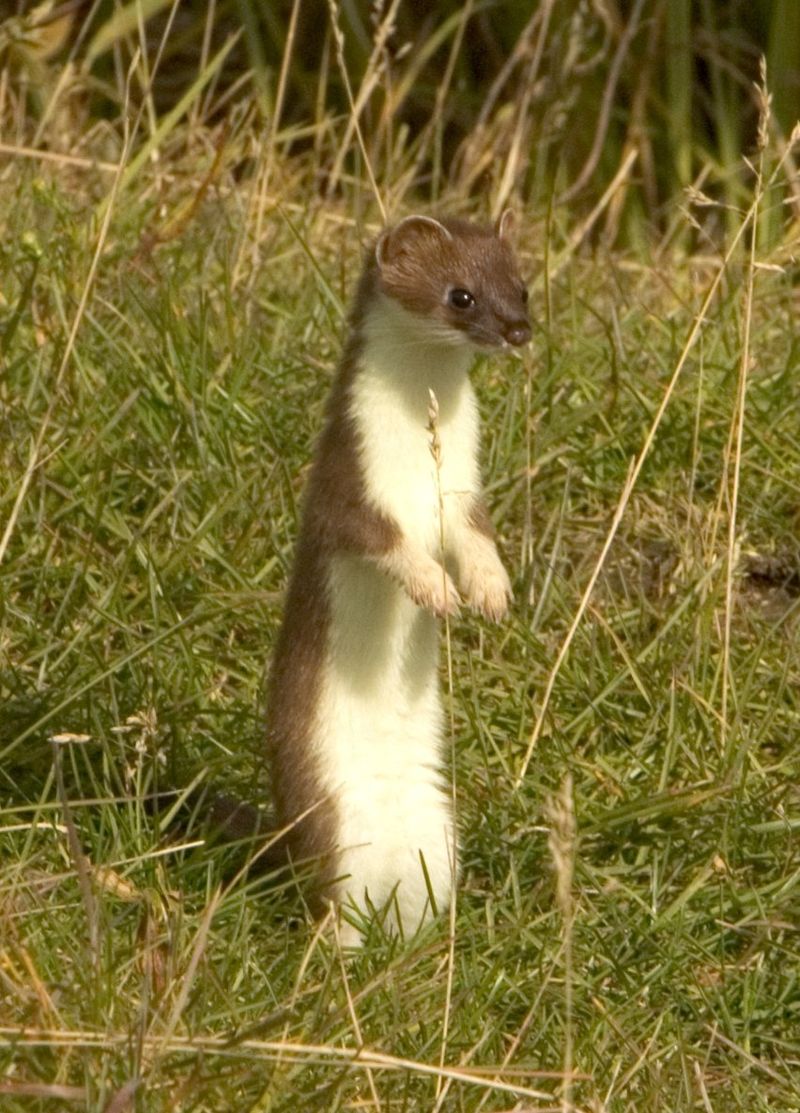
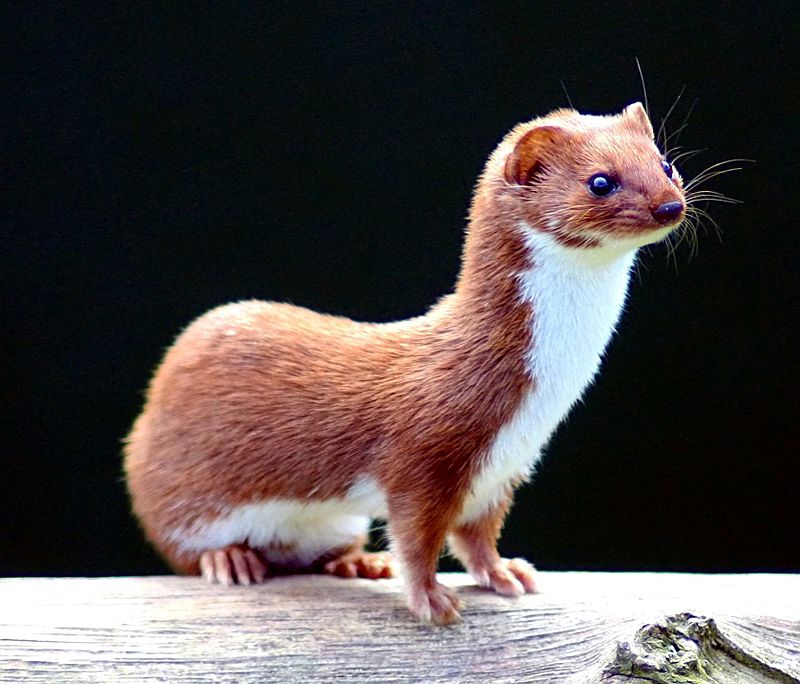
Pine marten Martes martes
Today, pine martens are rare but within their range, in northwest Scotland and parts of Ireland, they will make use of roof spaces and gardens in urban areas, tempted by an omnivorous palate. They are superbly adapted climbers and extremely agile, leaping up to four metres between tree branches, but hunt, mostly at night, on the ground. During the day, they rest on branches or in hollow trees, birds’ nests, or in burrows amongst rocks.
Appearance and activity Pine martens have dense, lustrous chocolate-brown fur and a distinctive creamy-yellow patch on their chest and throat. They have a weasel-like body-shape but are much larger (36-55 cm) with prominent rounded ears and a bushy tail. Generally nocturnal in winter; often active before dawn and after dusk in summer.
Diet Pine martens eat voles and mice, but also rabbits, small birds, birds’ eggs, berries and insects. Close to houses, they will scavenge from bird tables and rubbish bins and they have been known to enjoy sweet foods like strawberry jam and muffins if given the opportunity.
Status, population size and distribution Native, locally common in parts of Scotland but very rare in England and Wales. Scotland, 3,500; fewer than 100 in either England or Wales. In Scotland, their distribution is mostly confined to the northwest, and the population is expanding into Grampian, Tayside, Central and Strathclyde regions. In England and Wales, records are concentrated to the northwest of the Humber-Severn axis. They are a priority species in the UK Biodiversity Action Plan and are fully protected under the Wildlife and Countryside Act 1981.
References
1. Woods, M., McDonald, R.A., Harris, S. (2003) Predation of wildlife by domestic cats Felis catus in Great Britain.
Mammal Review 33 (2): 174-188 Full text
2 Cresswell, W.J. and Harris, S. 1988. Foraging behaviour and home-range utilization in a suburban Badger
(Meles meles) population Mammal Review 18: 37–49 Abstract
Other sources of information
Websites
Website of the Mammal Society
Books
Harris, S. (2020) Time to stop vilifying the urban fox. British Wildlife 31:163-170
Harris, S. and Yalden, D. (2008) Mammals of the British Isles: Handbook. Mammal Society
Neal, E. (1976) The badger. New Naturalist monograph series
Wembridge, D. (2012) Urban Mammals: A Concise Guide. People's Trust for Endangered Species Guides Whittet Books.
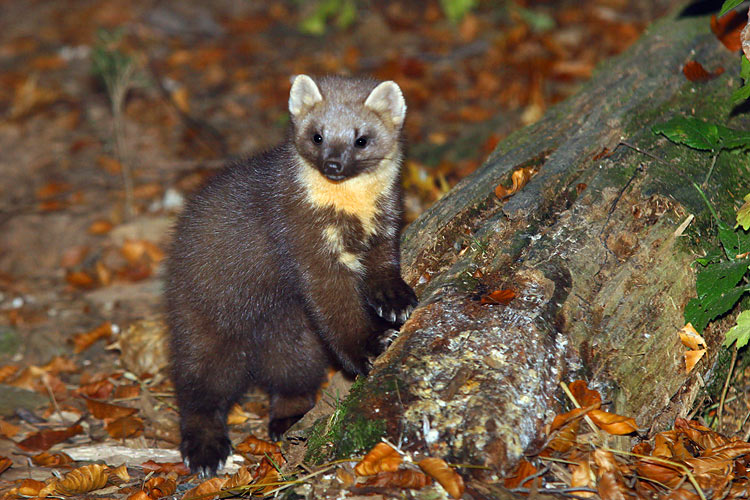
Unfortunately you won't see Pine martens unless you live in northwest Scotland and the Humber-Severn axis.




Fox footprint.
Inner city foxes tend to eat less caught prey than those in the suburbs, feeding more on scavenged food. The rich pickings that are available mean that urban foxes have smaller home ranges – typically about a tenth (10–100ha or 25–250 acres) of those in rural areas – and foxes have been known to commute, foraging in urban areas at night while spending the day out of town.
They are social animals, living in family groups of a breeding pair, together with cubs in the spring, and sometimes other subordinate juveniles and adults. These help with the rearing of cubs, feeding, grooming and playing with them. Each group occupies a territory and dens can be inside vacant or occupied buildings, often under floorboards, or under garden sheds. If necessary, foxes will dig extensive burrows (or ‘earths’), particularly in well-drained soils, choosing sites in overgrown gardens – in flowerbeds, rockeries or under tree roots – or cemeteries, under grave stones.
Foxes communicate with each other using a wide range of calls, facial expressions and body postures, as well as scent markings. Twelve adult and eight pup vocalisations have been identified and 28 groups of sounds described. Barks and loud contact calls of both sexes, particularly in the winter, include a blood-curdling ‘scream’.Smell and hearing are used to hunt and scavenge, probably using the latter to locate earthworms (a large part of their diet) as well as prey hidden in vegetation or snow.
Droppings (or ‘scats’) are left in conspicuous spots, such as on rockeries, around ponds and on patios, and fox urine has a distinctive musky odour.
To a minority of people, foxes are a nuisance, but for most, the sight of a wild carnivore or a litter of cubs, is a bonus. If you don’t want foxes in your garden, avoiding the use of fertilisers containing animal remains (such as fish or bonemeal), which can attract foxes or badgers) is sensible, and two safe, scent repellents, Scoot and Get Off My Garden, are available. Traditional repellents such as creosote, diesel and Renardine are hazards in themselves and should not be used.
Appearance and activity Foxes' bodies average 56-75cm in length, with up to 40cm tail as well.They weigh up to 9kg. In the summer, foxes lose the distinctive yellow-brown fur of their winter coat, appearing darker and scruffier while new, shorter fur grows through. Sometimes their bushy tail can be reduced to an almost furless vestige. The backs of their ears and front of their fore- and hindfeet are jet black. Foxes are active throughout the year and at any time during the day or night, but particularly so at dusk and dawn. During the day, they are sometimes seen sunning themselves on roofs.
Diet Foxes eat almost anything, rabbits, voles, earthworms and insects, and vegetable and fruirts in gardens. They are notorious scavengers from waste bins.
Status, population size and distribution Native, common and widespread. Hunting with dogs is illegal in England and Wales under the Hunting Act 2004 and is also illegal in Scotland. The GB population is about 225,000 (rural); 33,000 (urban); there are about 5000 adult foxes within the circle of the M25.
Nationally, there has been little change in the population over the last 10 years. Foxes are widely distributed in Britain and Ireland but are absent from all the Scottish islands, except Skye and Harris, and from the Scilly and Channel isles.
Stoats and weasels
Stoats and weasels are only rarely found in urban areas, but might be spotted at sites near to a rabbit warren or around grain or timber stores that support thriving populations of small mammals. Stoats and weasels are well adapted to pursuing prey into burrows: they have a sleek, sinuous shape and are exceptionally inquisitive. They are fierce predators and will kill and carry prey much larger than themselves, but are graceful and extraordinary animals to watch.


Stoat Mustela erminea
Appearance and activity Stoats average 16-31 cm and up to 445gm weight. Stoats are often a more sandy brown colour than weasels but can be a similar chestnut brown. They have a yellowish-white underside and a black-tipped tail (while weasels’ tails are uniformly coloured). In Scotland, Wales and the west of Britain, stoats turn snow-white in winter and only the tip of the tail remains black. In winter they are largely nocturnal, while in summer they are mostly active during the day.
Diet Stoats predate rabbits and small rodents and shrews, and occasionally catch birds and fish and rob nests for eggs. They will eat insects and berries.
Status, population size and distribution Native, common and widespread. GB population 462,000. The population has continually increased over the last 25 years. Stoats are widely distributed throughout Britain and Ireland, though only rarely in urban areas.
Weasel Mustela nivalis
Weasels are Britain’s smallest carnivores, from 17-25 cm in length weighingup to about 100g. They hunt along hedgerows or stone walls, investigating each hollow and burrow. They often stand up on their hind legs, surveying their surroundings for smells and any movement. Their small size means that weasels must eat a third of their body weight each day and when prey is scarce, their numbers fall.
Appearance and activity Weasels are smaller than stoats and have a whiter belly (the line between the dark and lighter fur is irregular rather than straight as it is in stoats). Their tails are proportionately shorter than those of stoats and lack the black bushy tip. They are mostly diurnal.
Diet Mainly mice and voles, and small birds and eggs in spring
Status, population size and distribution Native, common and widespread. GB population 450,000. The population has continually increased over the last 25 years. Weasels are widely distributed across Britain but absent from Ireland and some offshore islands, including the Isle of Man and the Channel Islands.
Stoat (left) and Weasel (above)

Unfortunately you won't see Pine martens unless you live in northwest Scotland and the Humber-Severn axis.
Pine marten Martes martes
Today, pine martens are rare but within their range, in northwest Scotland and parts of Ireland, they will make use of roof spaces and gardens in urban areas, tempted by an omnivorous palate. They are superbly adapted climbers and extremely agile, leaping up to four metres between tree branches, but hunt, mostly at night, on the ground. During the day, they rest on branches or in hollow trees, birds’ nests, or in burrows amongst rocks.
Appearance and activity Pine martens have dense, lustrous chocolate-brown fur and a distinctive creamy-yellow patch on their chest and throat. They have a weasel-like body-shape but are much larger (36-55 cm) with prominent rounded ears and a bushy tail. Generally nocturnal in winter; often active before dawn and after dusk in summer.
Diet Pine martens eat voles and mice, but also rabbits, small birds, birds’ eggs, berries and insects. Close to houses, they will scavenge from bird tables and rubbish bins and they have been known to enjoy sweet foods like strawberry jam and muffins if given the opportunity.
Status, population size and distribution Native, locally common in parts of Scotland but very rare in England and Wales. Scotland, 3,500; fewer than 100 in either England or Wales. In Scotland, their distribution is mostly confined to the northwest, and the population is expanding into Grampian, Tayside, Central and Strathclyde regions. In England and Wales, records are concentrated to the northwest of the Humber-Severn axis. They are a priority species in the UK Biodiversity Action Plan and are fully protected under the Wildlife and Countryside Act 1981.
References
1. Woods, M., McDonald, R.A., Harris, S. (2003) Predation of wildlife by domestic
2. Cresswell, W.J. and Harris, S. 1988. Foraging behaviour and home-range
utilization in a suburban Badger (Meles meles) population Mammal Review 18:
37–49 Abstract
Other sources of information
Websites
Website of the Mammal Society
Books
Harris, S. (2020) Time to stop vilifying the urban fox. British Wildlife 31:163-170
Harris, S. and Yalden, D. (2008) Mammals of the British Isles: Handbook. Mammal Society
Neal, E. (1976) The badger. New Naturalist monograph series
Wembridge, D. (2012) Urban Mammals: A Concise Guide. People's Trust for Endangered Species Guides Whittet Books.
Written by David Wembridge PTES Reviewed by Steve Head

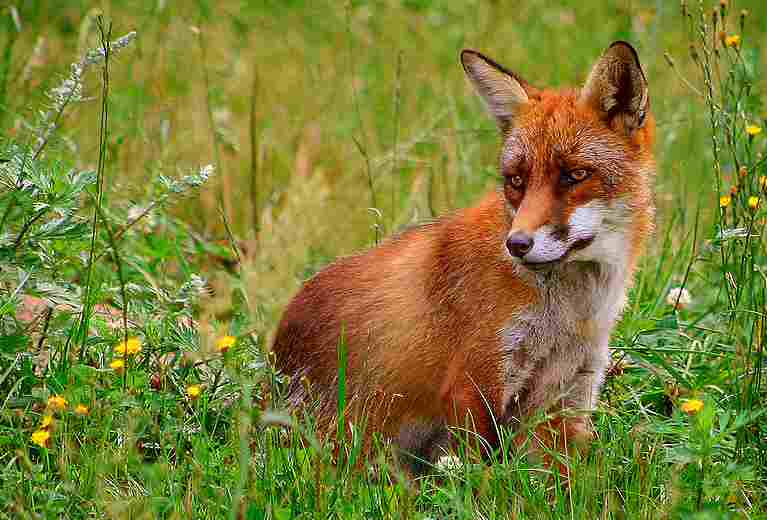

Garden Wildlife
Garden Wildlife

























